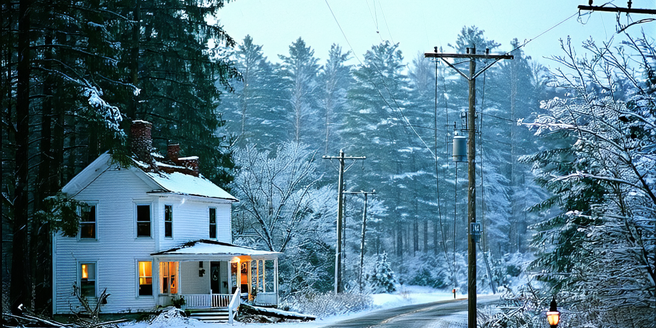
Understanding Winter Storm Risks in Rural Areas
Understanding the risks associated with winter storms is crucial for those living in rural areas. Unlike urban environments, rural regions often face challenges such as limited accessibility to resources, less immediate help, and longer power outages. With fewer public services and infrastructure disadvantages, rural residents must be proactive. Developing an awareness of local weather patterns, access to reliable forecasts, and understanding the limitations of local services are essential. Preparation involves understanding the unique vulnerabilities of rural areas, such as blocked roads and communication issues. It’s vital to assess the risks specific to one’s location, accounting for geographical features like mountains or open plains. By recognizing these risks, rural residents can better prepare and protect their homes, families, and livelihoods during severe weather events.
Creating an Essential Winter Survival Kit
Creating a comprehensive winter survival kit is imperative for rural dwellers facing severe storms. Essential items include non-perishable foods, potable water to last several days, and medications. A battery-powered or hand-crank radio ensures access to emergency broadcasts. Include flashlights with extra batteries, first aid supplies, and a manual can opener. Warm clothing, blankets, and matches are vital for warmth and safety. It’s wise to stock up on toiletries and additional items like a multi-tool and duct tape. Prepare for power outages by including a backup heating source like propane heaters. Remember to personalize your kit to fit household needs, including necessary items for children or pets. Having a well-stocked winter survival kit can make all the difference, ensuring safety and comfort throughout prolonged isolation.
Protecting Livestock and Pets During a Storm
Protecting livestock and pets during winter storms is vital for rural residents who often depend on their animals for livelihood and companionship. Start by ensuring shelters are well-insulated against harsh winds and snow. Stock enough feed and water buckets that won’t freeze. Farm animals should have clean, dry bedding to prevent hypothermia. Pets, especially outdoor ones, must be brought indoors or given sufficient shelter. Microchipping and proper identification tags are crucial in case animals get lost. Regular check-ins on their conditions and a rotation system for letting them out in harsher weather are advised. Emergencies may require quick evacuations, so prepare transportation means. Having an action plan for animal care during unexpected situations helps safeguard their well-being, securing both animal welfare and economic stability.
Ensuring Your Home Is Winter-Ready
Getting your home ready for winter involves critical steps that can prevent damage and increase comfort. Insulate pipes to prevent freezing and potential bursts. Seal all windows and doors with weather stripping, reducing drafts and conserving heat. Service heating systems to ensure efficiency, and have chimneys cleaned if you use fireplaces. Trim branches and clear gutters to avoid water damage and ice build-up. Stock up on essential supplies, such as snow removal tools and ice melt for walkways. Check roofs for loose shingles or leaks and repair them. Maintaining a full fuel tank ensures you won’t run out during power outages. Preparing your home is not just about comfort; it’s essential for preventing costly repairs and staying safe during prolonged exposure to the elements.
Maintaining Access to Emergency Services
Having reliable access to emergency services during winter storms is crucial, particularly in rural areas where isolation can be a significant issue. Start by knowing your community’s emergency response plan and having local emergency contacts readily available. Keep access roads to your property clear of snow and debris to allow emergency vehicles to reach you if necessary. Establish a reliable communication line like a landline or fully charged cellphone with backup power. Consider setting up a designated meeting point with family or neighbors for contact. Enroll in local alert systems that provide updates and warnings. For those with medical needs, ensure that all supplies and medications are adequately stocked. Proactively maintaining access to these services is vital for prompt responses in emergencies that can arise during severe storms.
Community Support and Networking Tips
Building a strong community network can be invaluable when tackling the challenges of winter storms. Participate in local community groups or online platforms that facilitate communication and resource sharing. Establishing a neighborhood watch or storm preparedness team can provide mutual aid and support. Share resources and strategies with neighbors, like snow removal tools or backup power sources. Organize community meetings to discuss potential needs and solutions collectively. A well-knit community can assist vulnerable residents, providing reassurance and practical help in times of distress. Engage with local authorities and participate in emergency preparedness drills. By nurturing these community relationships and communication channels, residents can face the uncertainties of severe weather with pooled resources and shared resilience.
